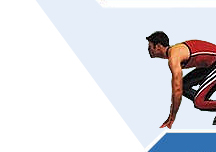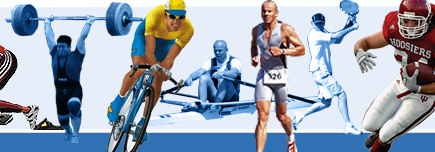NECK INJURIES
Neck Pain:
Pain that develops slowly (often over a number of years) and tends to occur during or after certain activities or neck positions is frequently caused by cervical foraminal stenosis. Usually, impingement of one nerve root on one side of the spine causes most of the symptoms.
Pain that radiates down the arm, and possibly into the hands and fingers, is frequently caused by a cervical herniated disc or foraminal stenosis pinching a nerve in the neck. The pain may be accompanied by numbness or tingling in the arms and/or hands. The symptoms may start suddenly or develop over time.
The approach to treatment for a cervical disc herniation is guided by how long the pain lasts, pain intensity and the degree to which the cervical nerve and/or spinal cord are affected. Most commonly, the symptoms are temporary and can be treated successfully with conservative care (such as physical therapy and chiropractic manipulations).
What is whiplash?
Whiplash is condition caused by injury to the soft-tissue structures of the cervical spine, or neck region. Usually whiplash is a strain of the muscles or sprain of the ligaments that move and support the spine and head. Often whiplash occurs after a sudden, unexpected movement of extension and flexion of the neck, most commonly during a car crash. This can also be the result of sleeping or holding the neck in an awkward position.
What is the difference between a sprain and a strain?
A sprain is an injury to a ligament. A ligament is a thick, tough, fibrous tissue that connects bones together. Commonly injured ligaments are in the ankle, knee, and wrist. The ligaments can be injured by being stretched too far from their normal position. The purpose of having ligaments is to hold your skeleton together in a normal alignment -- ligaments prevent abnormal movements. However, when too much force is applied to a ligament, such as in a fall, the ligaments can be stretched or torn; this injury is called a sprain.
A strain is an injury to a muscle or tendon. Muscles move your skeleton in an amazing variety of ways. When a muscle contracts it pulls on a tendon, which is in turn connected to your bone. Muscles are made to stretch, but if stretched too far, or if stretched while contracting, an injury called a strain my result. A strain can either be a stretching or tear of the muscle or tendon.
Pinched Nerves:
A pinched nerve is a general term that describes an injury to a nerve or group of nerves. The damage may include compression, constriction or stretching. Nerves that pass near or through bones or other rigid tissues are most susceptible to pinching. Pinched nerves result in numbness, pain, burning and tingling sensations radiating out from the affected area.
Pinched nerves can be grouped into two types depending on where they occur in the body. Pinched nerves can occur within or in the vicinity of the vertebral column. For example, herniation of vertebral discs causes pain along the pathway of the nerve that is affected. Similarly, stenosis, or narrowing, of the vertebral column puts pressure on nerves traveling through the vertebrae. Another group of pinched nerves are referred to as nerve entrapment syndromes and they affect peripheral nerves, most commonly in the arms.
Degenerative Joint Disease:
Degenerative Joint Disease (DJD) or arthritis is a degeneration or ‘wear and tear’ of articular (joint surface) cartilage usually accompanied by an overgrowth of bone (osteophytes), narrowing of the joint space, sclerosis or hardening of bone at the joint surface, and deformity in joints. Osteooarthritis (OA) is not usually associated with inflammation, although swelling of the joint does frequently occur in OA. This type of arthritis is called osteoarthritis, OA, degenerative joint disease, DJD, or osteoarthrosis. Other forms of arthritis (rheumatoid, post-traumatic, and other inflammatory disorders) frequently may have OA as the end-stage, making differentiation difficult.
A program of regular physical activity can strengthen the muscles, tendons, and ligaments surrounding the affected joints and preserve mobility in joints that are developing bone spurs. Many chiropractic physicians believe that osteoarthritis may be prevented by good health habits. Remaining active, maintaining an ideal body weight, and exercising the muscles and joints regularly so as to nourish cartilage.
Degenerative Disc Disease:
With Degenerative Disc Disease (DDD), the main problem lies within one or more of the intervertebral discs. There is a disc between each of the vertebra in your spine. The intervertebral discs are designed to absorb pressure and keep the spine flexible by acting as cushions during body movement. The discs are similar to shock absorbers. Without the cushion effect of the discs, the vertebrae in your spine would not be able to absorb stresses, or provide the movement needed to bend and twist. Bones cannot sustain high stress repeatedly without being damaged. Much of the mechanical stress of everyday movements is transferred to the discs.
The most common early symptom of degenerative disc disease is usually pain in the back that spreads to the buttocks and upper thighs. When chiropractors refer to degenerative disc disease, they are usually referring to a combination of problems in the spine that "start" with damage to the disc, but eventually begin to affect all parts of the spine.
|















